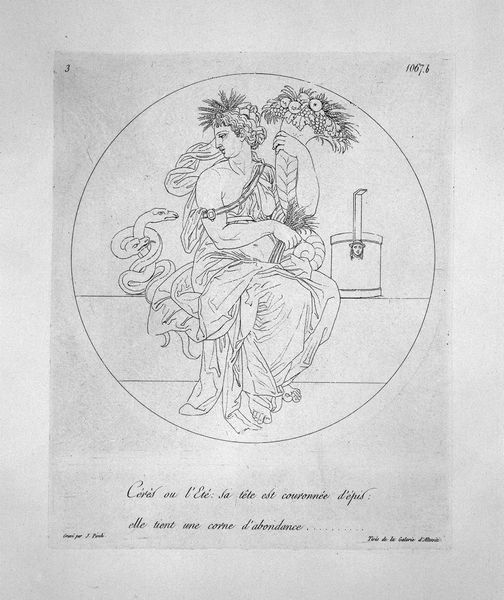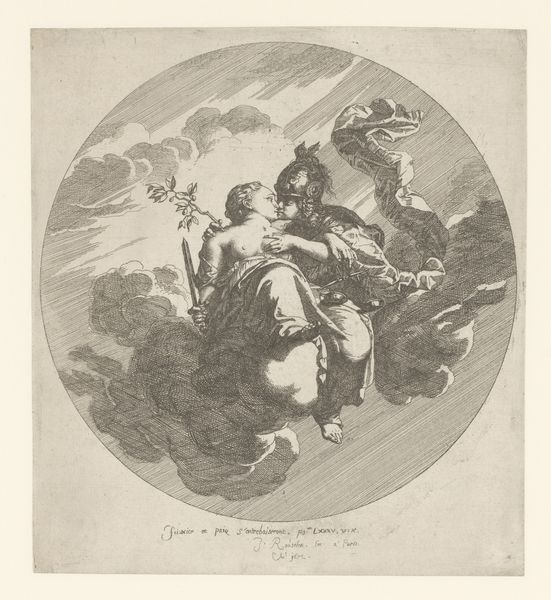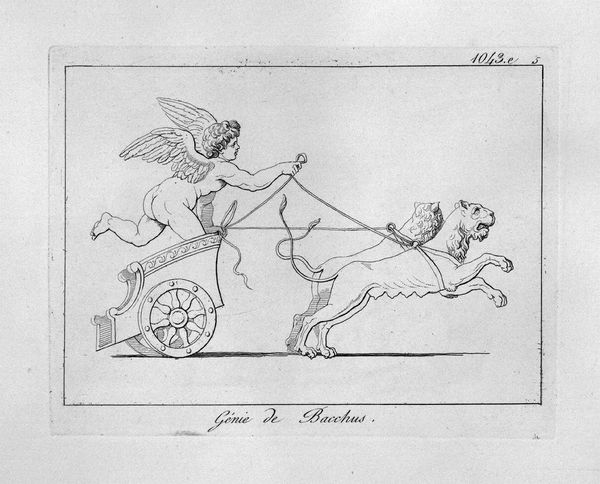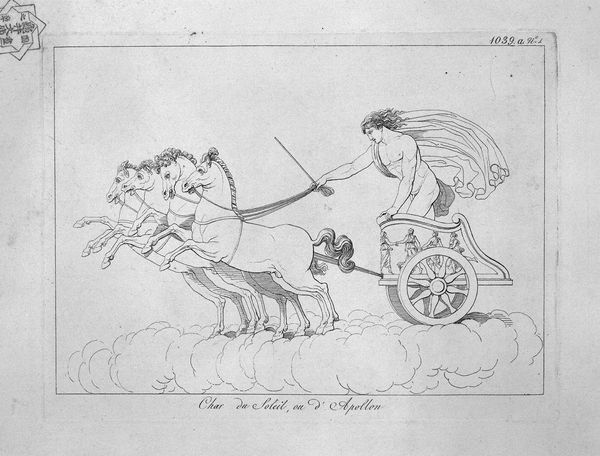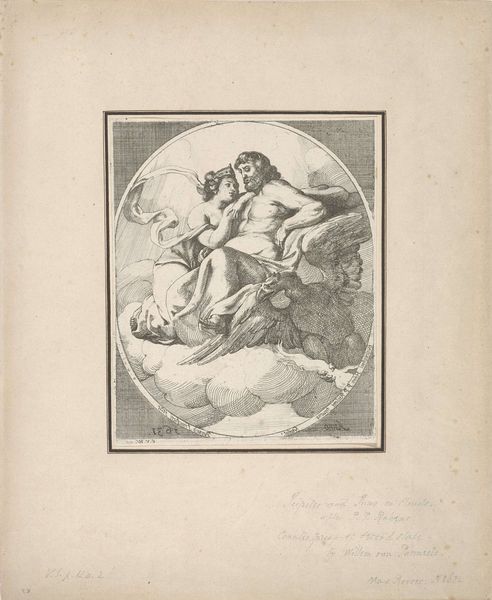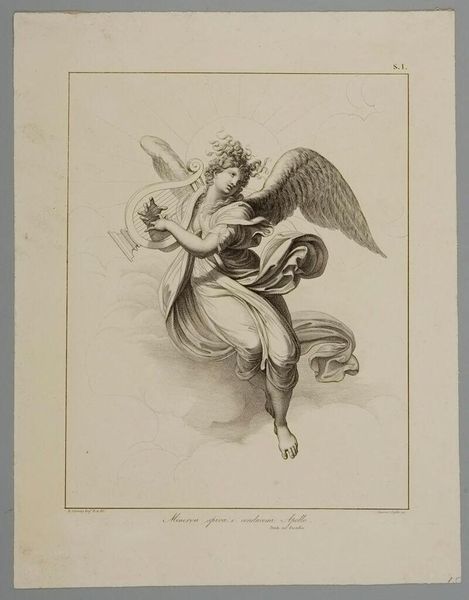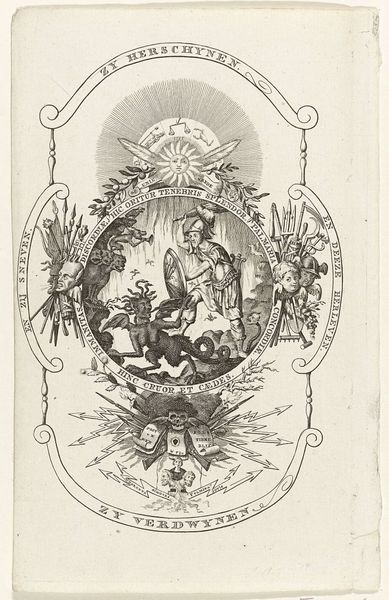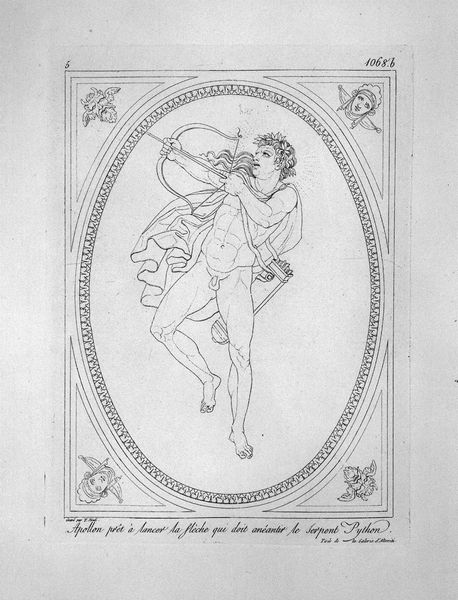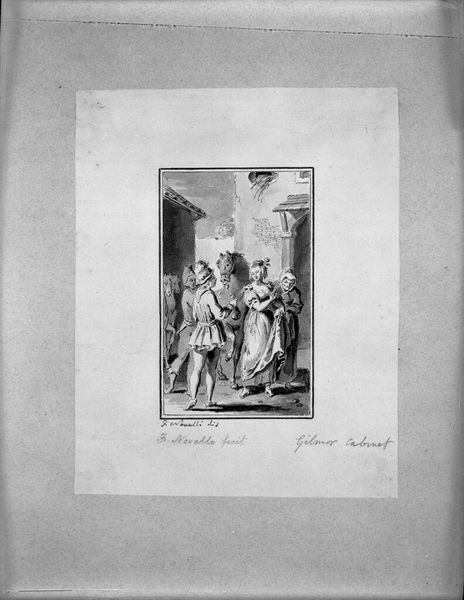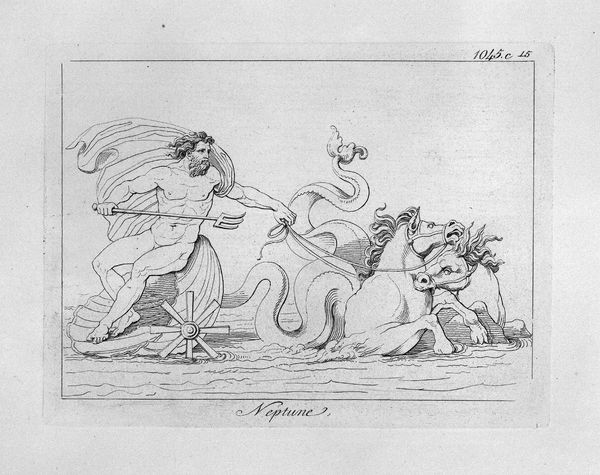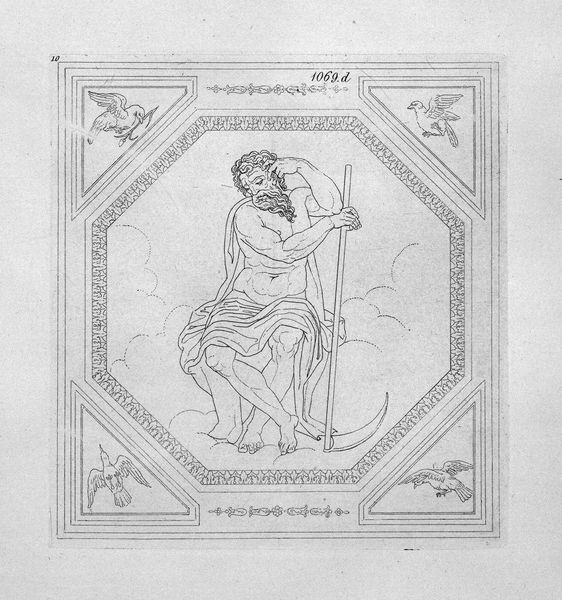
print, engraving
#
neoclacissism
# print
#
greek-and-roman-art
#
landscape
#
classical-realism
#
figuration
#
roman-mythology
#
mythology
#
line
#
history-painting
#
engraving
Copyright: Public domain
Curator: We're looking at an engraving by Giovanni Battista Piranesi titled "Aeolus seated on clouds." Editor: It feels immediately somber, even a little wearying. The figure is so still amidst all that implied atmospheric energy. Curator: Precisely. Piranesi, though working within a neoclassical framework, often infused his works with a certain dramatic tension and even an almost gothic sensibility. Aeolus, the Greek god of the winds, isn’t usually depicted this way, looking so dejected. The figure seems weighted down by the burden of command, perhaps, or by the inevitability of weather patterns that would affect human life. I wonder about the choice to emphasize the human features over the divine... Editor: Look closely. You can see faint renderings of shoes with small wings under the robes. A winged messenger. It’s a very interesting interpretation—this interplay between a burdened figure and the swift messengers carrying out his decrees, symbolizing both the weight and the execution of power. Is this intended to subtly show that power always rests somewhere even as the wheels of industry spin wildly ahead of it? Curator: Interesting! Especially given that Piranesi was deeply invested in the visual culture of power. He created prints that shaped perceptions of Rome's ancient grandeur, works commissioned and disseminated to enhance the status of institutions and elites. This engraving would have resonated within such socio-political currents of the time. Images held social and cultural currency and often did quite a lot to perpetuate existing social arrangements. Editor: Absolutely. Consider also the classical composition confined within a tight circle; the line work reminds us of something like a Roman coin; this work could be interpreted to serve as some meditation on governance; it makes you think about the power over weather that resides at any seat of governance. Curator: This engraving is fascinating as it really showcases the intersection of mythology, art, and politics that defined much of Piranesi's output. Editor: Yes. And it is important that we understand its cultural importance so we are equipped to reflect on these elements today.
Comments
No comments
Be the first to comment and join the conversation on the ultimate creative platform.
